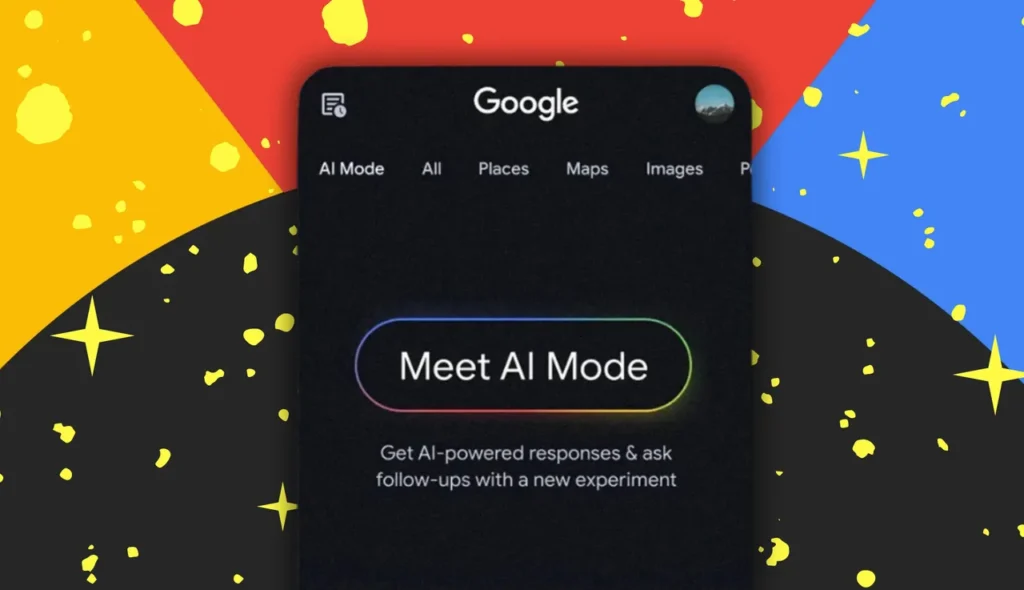Google is once again transforming the digital landscape with its revolutionary AI Mode, an advanced feature integrated into its search engine experience. This cutting-edge development marks a major leap toward semantic search, user intent prediction, and personalized SERPs (Search Engine Results Pages), setting the stage for a future where search engine optimization (SEO) must adapt or fall behind.
In this article, we break down what Google AI Mode is, how it impacts the search ecosystem, and what digital marketers and SEO professionals must do to stay competitive.
What Is Google AI Mode?
Google AI Mode refers to an enhanced search experience powered by Google’s generative artificial intelligence systems. It leverages large language models (LLMs), such as Gemini and PaLM, to generate conversational, contextual, and dynamic responses right on the search results page.
Unlike traditional blue-link results, AI Mode provides:
- AI-generated answers with summarized information.
- Follow-up query suggestions that mimic human-like interactions.
- Multimodal content integration (text, video, images, data).
- Deeper understanding of searcher intent and behavior.
This evolution aligns closely with Google’s mission to “organize the world’s information and make it universally accessible and useful”—now with a heavy AI twist.
How Google AI Mode Is Reshaping Search
1. Changing the Click Pattern
The introduction of AI Overviews (formerly called Search Generative Experience or SGE) means users may find their answers without ever clicking through to a website. This shift has major implications for organic traffic, especially for content that once thrived on simple queries like “how to,” “what is,” or “best tools for X.”
2. Emphasis on E-E-A-T
With AI-curated content summaries, Google’s focus on Experience, Expertise, Authoritativeness, and Trustworthiness (E-E-A-T) becomes even more critical. Only content that meets these standards is likely to be cited or linked within AI-generated responses.
3. Richer SERP Features
Expect more rich snippets, knowledge panels, and zero-click results, all tailored to what the AI deems most relevant. This calls for better structured data markup and content schema optimization.
What SEOs Should Do Now
To stay competitive, SEO professionals must evolve their strategies to align with how AI Mode interprets, ranks, and serves content.
1. Create In-Depth, Contextual Content
AI thrives on content that answers not just a query, but a user’s underlying intent. That means focusing on:
- Topical authority
- Comprehensive coverage
- Internal linking strategies
- Related subtopics and long-tail keywords
Example: Instead of just optimizing for “best SEO tools,” include subsections on free vs. paid tools, use cases, expert opinions, and case studies.
2. Optimize for Conversational Search
AI Mode is designed to simulate a conversation. Use natural language and question-based headers like:
- “What are the benefits of Google AI Mode?”
- “How will Google AI affect content marketing?”
This aligns with voice search SEO and increases visibility in follow-up suggestions.
3. Monitor AI Visibility Metrics
Tools like Semrush, Ahrefs, and Similarweb are beginning to offer insights into AI overview visibility—a new KPI for modern SEOs. If your site appears in AI summaries, that’s a signal your content is aligned with Google’s evolving standards.
4. Use Structured Data and Schema Markup
With more SERP features being populated directly from AI, proper use of:
FAQPageHowToArticleProductOrganization
schema becomes crucial for rich result eligibility and entity recognition.
Challenges and Opportunities
While Google AI Mode presents some real challenges—like a potential drop in organic clicks—it also opens up exciting opportunities for:
- Featured snippets placement
- Brand mentions in AI summaries
- Higher visibility for authoritative domains
SEOs who adapt now can future-proof their strategy and gain a competitive edge.
Final Thoughts
The shift to Google AI Mode is not a trend—it’s a tectonic shift in how search works. SEO is no longer just about keywords and backlinks; it’s about understanding how AI interprets content, identifies value, and delivers relevance to the end user.
For content creators, marketers, and technical SEOs, the message is clear: evolve with AI, or risk becoming invisible.
Stay Updated
Google continues to test and refine AI Mode, with new features rolling out across different geographies and query types. Subscribe to official Google Search Central updates and follow trusted SEO news sources like:
- Search Engine Journal
- Search Engine Land
- Semrush Blog
- Moz
- Google Search Liaison (Twitter/X)



